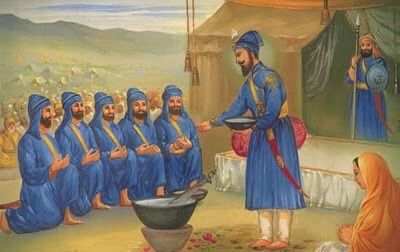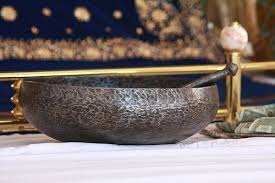Khande di Pahul stands as one of the most sacred ceremonies in Sikhism, representing a profound spiritual transformation and formal initiation into the Khalsa Panth. This sacred ritual, established by Sri Guru Gobind Singh Ji in 1699, continues to serve as a cornerstone of Sikh identity and devotion.

Historical Origins of Khande di Pahul
The First Amrit Ceremony
The roots of Khande di Pahul trace back to the historic Vaisakhi day of March 30, 1699, at Anandpur Sahib, when Guru Gobind Singh Ji established the Khalsa Panth. On this momentous occasion, Guru Sahib addressed the congregation from the entryway of a tent pitched on a hill (now called Kesgarh Sahib). He drew his sword and asked for a volunteer willing to sacrifice their head for their faith.
After his first call, there was hesitation among the crowd. Upon the third request, Bhai Daya Ram (later known as Bhai Daya Singh Ji) stepped forward, offering his head to the Guru. Guru Gobind Singh Ji took him into a tent and emerged shortly after with blood dripping from his sword. This dramatic sequence continued until five devoted Sikhs had offered themselves.
These five brave souls—Bhai Daya Singh Ji, Bhai Dharam Singh Ji, Bhai Himmat Singh Ji, Bhai Mukham Singh Ji, and Bhai Sahib Singh Ji—came from different castes and regions of India, symbolizing the universal brotherhood that would become a hallmark of the Khalsa.
Evolution from Earlier Practices
Before the establishment of Khande di Pahul, the initiation ceremony was known by different names such as Charan Amrit or Charan Phul or Pag Pahul. During the time of earlier Gurus, neophytes would be initiated by drinking water that had touched the Guru's feet. However, Guru Gobind Singh Ji transformed this practice into a more formal and symbolic ceremony that would strengthen the Sikh community during times of persecution.
The Spiritual Significance of Khande di Pahul
Transformation and Rebirth
Khande di Pahul represents more than a mere ritual—it symbolizes a spiritual rebirth. The term "Pahul" itself derives from "Pahu," which means an agent that brightens, accelerates, or sharpens the potentialities of a given object. Through this ceremony, an ordinary person transforms into a member of the Khalsa, committed to living according to the highest principles of Sikhi.
Connection to the Panth
Khande di Pahul connects the Sikh with the Panth and helps them lead a pure and pious life to unite with Waheguru. It embodies the primary objects of Sikh faith and serves as a promise to lead a righteous life seeking unity with the Almighty Lord through His Grace.
Spiritual Elevation
The ceremony is about inward cleansing of the conscience and seeking unity with the Supreme Lord. Any person baptized with Amrit has been blessed by Akal Purakh, establishing a direct spiritual connection that guides them on their path toward divine union.
The Khande di Pahul Ceremony

Preparation for the Ceremony
The Amrit Sanchar ceremony requires careful preparation, both for those administering the Amrit and those receiving it. The ceremony takes place in the presence of Sri Guru Granth Sahib Ji, typically in a Gurdwara or any place sanctified by the Guru's presence.
For those seeking to receive Amrit, preparation involves mental, spiritual, and physical readiness. Candidates must demonstrate a sincere commitment to Sikh teachings and be willing to embrace the responsibilities of Khalsa life.
The Role of the Panj Pyare
Five baptized Sikhs, representing the original Panj Pyare, conduct the ceremony. These individuals must be observant of Sikh religious discipline and the Sikh code of conduct. Both men and women can serve as Panj Pyare during the ceremony.
The Ceremony Process
The ceremony begins with Ardas (prayer) seeking blessings for the proceedings. The Panj Pyare sit in Vir Asan (seated on the ground with left knee down and right knee up) around a Sarb Loh (iron or steel) cauldron (Bata) into which clean water is poured. Patashas (sugar crystals) are added to the water, symbolizing sweetness and compassion that should temper the steel of the Khalsa warrior spirit.
The Panj Pyare then prepare the Amrit by stirring the sweetened water with a Khanda (double-edged sword) while reciting five sacred prayers: Japji Sahib, Jaap Sahib, Anand Sahib by Guru Amar Das Ji, and certain swaiyas (quatrains) composed by Guru Gobind Singh Ji9. The entire recitation may take up to two hours, with all five initiators kneeling together around the iron bowl for the duration.
After the preparation, each candidate comes forward and kneels. The sacred nectar is sprinkled on their hair and eyes five times, and they drink from the bowl five times. After each administration, they exclaim "Waheguru Ji Ka Khalsa, Waheguru Ji Ki Fateh!" The remainder of the nectar is shared by all receiving the initiation, all drinking from the same bowl.
Commitments and Instructions
Following the administration of Amrit, the new Amritdhari Sikhs receive instructions about their responsibilities. They learn about the Four Cardinal Sins (Bajjar Kurehats) that must be avoided:
Cutting or trimming of hair (Kesh)
Fornication or adultery
Consuming any type of Kutha Meat
Using tobacco, alcohol, or other intoxicants
The ceremony concludes with a collective recitation of the Mool Mantra and a final Ardas, formally welcoming the initiates into the Khalsa Panth.
Living as an Amritdhari Sikh
Adoption of Singh and Kaur
One of the significant aspects of receiving Khande di Pahul is the adoption of the surnames "Singh" for men and "Kaur" for women. These names symbolize equality and a shared identity that transcends caste and regional differences.
The term "Singh," derived from Sanskrit meaning "lion," reflects qualities of courage and bravery. Similarly, "Kaur," meaning "princess," represents equality, bravery, and responsibility for women. These titles reinforce the sense of belonging to the casteless Khalsa community.
Maintaining the Five K's
Amritdhari Sikhs commit to maintaining the Five K's (Panj Kakkar) at all times:
- Kesh (uncut hair)
- Kangha (wooden comb)
- Kara (iron bracelet)
- Kachera (cotton underwear)
- Kirpan (sword)
These symbols are not mere adornments but represent the Khalsa's commitment to righteousness, discipline, and readiness to defend the oppressed.
Service to Community
Central to the Khalsa way of life is the concept of seva (selfless service). Amritdhari Sikhs are expected to contribute to the welfare of their community and humanity at large, embodying the principle of "Sarbat da Bhala" (welfare of all).
Conclusion
Khande di Pahul represents the pinnacle of commitment to the Sikh faith—a transformative ceremony that binds the initiator to the Guru's teachings and the Khalsa brotherhood. Through this sacred ritual, Sikhs embrace a distinct identity and pledge to uphold the highest values of courage, compassion, and righteousness.
The ceremony of Khande di Pahul continues to inspire Sikhs worldwide to deepen their faith and strengthen their commitment to the path shown by Guru Gobind Singh Ji. The Khalsa spirit, born on that historic Vaisakhi day in 1699, lives on in every Amritdhari Sikh who strives to embody the ideals of Sant-Sipahi (Saint-Soldier) in today's world.
Note - We have made every effort to ensure the accuracy and reliability of the information provided. However, this content is intended for informational purposes only and reflects historical and cultural perspectives. DVN does not assume responsibility for any disputes or actions that may arise from the use of this content. If you believe any information is incorrect or misleading, please contact us .